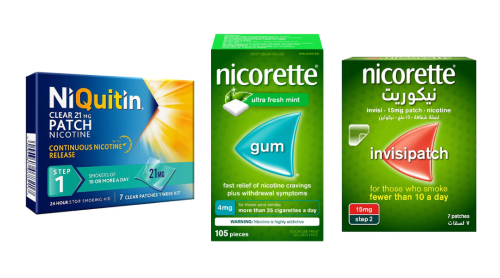
Date: 23 Sep 2025
Smoking has long been recognized as one of the biggest threats to public health. While some people smoke socially and others rely on it daily, the dangers remain the same, as smoking harms nearly every organ in the body and affects those around you as well. However, quitting is possible, and today, there are more effective methods than ever to help smokers stop.
Direct and Indirect Dangers of Smoking
Direct Health Dangers: What Smoking Does to Your Body
Smoking doesn't just increase your risk of lung cancer—though that risk is significant. It's like inviting a silent saboteur into every organ system in your body:
- Cardiovascular System: Smoking doubles your risk of heart disease and stroke. It damages your blood vessels, raises blood pressure, and makes your blood more likely to clot.
- Respiratory System: Beyond lung cancer, smoking causes chronic obstructive pulmonary disease (COPD), emphysema, and chronic bronchitis. Even if you don't develop cancer, you're setting yourself up for a lifetime of breathing difficulties.
- Immune System: Smokers get sick more often and take longer to recover. Your body's natural defense system becomes compromised, leaving you vulnerable to infections.
- Reproductive Health: Smoking affects fertility in both men and women and can cause complications during pregnancy, including premature birth and low birth weight.
Indirect Dangers
The damage doesn't stop with your own body. Secondhand smoke puts everyone around you at risk—your family, friends, and colleagues. Children exposed to secondhand smoke have higher rates of respiratory infections, asthma, and ear infections.
Interventions to Help Quit Smoking

The good news? You don't have to go it alone. Research has identified several effective approaches to help you quit smoking, and combining multiple strategies often works best.
A. Non-Pharmacological Approaches: Changing Behaviors and Mindsets
- In-Person Counseling: Working with a trained counselor can help you identify your smoking triggers and develop personalized coping strategies. Group sessions also provide peer support from others going through the same journey.
- Mobile Apps: Modern technology brings support to your fingertips. Apps can track your progress, provide daily motivation, and connect you with online communities of people quitting smoking.
- Self-Help Materials: Books, websites, and educational materials can provide valuable strategies and keep you motivated throughout your quit journey.
- Psychotherapy: Cognitive-behavioral therapy (CBT) is particularly effective for smoking cessation, helping you change thought patterns and behaviors associated with smoking.
B. Pharmacological Approaches
- Varenicline (Chantix®): This medication blocks nicotine receptors in your brain, reducing both the pleasure from smoking and withdrawal symptoms.
- Sustained-Release Bupropion (Zyban®): Originally an antidepressant, bupropion helps reduce nicotine cravings and withdrawal symptoms.
- Nicotine Replacement Therapy (NRT®): Available in multiple forms, NRT provides controlled amounts of nicotine to ease withdrawal symptoms while you break the behavioral habit of smoking.
C. The Power of Combination Therapy
Research shows that combining behavioral interventions with nicotine replacement therapy can increase success rates by 50-70%. This approach addresses both the physical addiction to nicotine and the psychological habits associated with smoking.
D. Intervention For Pregnant Women
If you're pregnant or planning to become pregnant, quitting smoking is one of the most important things you can do for your baby's health.
Smoking during pregnancy increases the risk of:
- Miscarriage and stillbirth
- Premature birth
- Low birth weight
- Birth defects
- Sudden infant death syndrome (SIDS)
While nicotine replacement therapy during pregnancy requires medical supervision, many healthcare providers consider it safer than continued smoking. Always consult with your doctor to develop the safest quit plan for you and your baby.
Nicotine Replacement Therapy (NRT)

Nicotine replacement therapy is one of the most widely used methods to help smokers quit. It provides nicotine without the harmful chemicals found in tobacco smoke, reducing withdrawal symptoms like irritability, restlessness, and intense cravings.
There are different forms of NRT, and each works in its own way:
- NiQuitin Patches are a crucial part of your final phase in nicotine replacement therapy (NRT), designed to help you gradually reduce nicotine dependency. These 7mg patches are intended for use after completing Steps 1 and 2 of the NiQuitin program, helping you ease off nicotine entirely in a controlled, supportive way.
- Nicotine gum delivers nicotine more quickly, making it useful for sudden cravings or in situations where smoking used to be part of a routine, like after meals or during stress.
- Nicotine lozenges, mouthsprays, and invisi-patches are other forms that provide flexibility depending on personal preference.
At Pharmily Kenya, some of the available NRT products include:
Patches provide a steady stream of nicotine through your skin over 16-24 hours. They're discreet, convenient, and help maintain stable nicotine levels throughout the day.
- Step I (21mg) is for the first phase when cravings are strongest.
- Step II (14mg) helps taper dependence after the body adjusts.
- Step III (7mg) is the final stage to completely wean off nicotine.
This structured system mirrors the body’s adjustment process and prevents abrupt withdrawal.
The Nicorette Invisi Patch (25mg) works similarly to NiQuitin but is designed to be discreet. It is clear, comfortable to wear, and provides a steady dose of nicotine for 16 hours. This makes it useful for people who want support throughout the day without drawing attention.
- 2mg strength: For those who smoke their first cigarette more than 30 minutes after waking
- 4mg strength: For those who smoke their first cigarette within 30 minutes of waking
- Nicorette Fruitfusion Gum 2mg: Provides a refreshing taste for an enjoyable experience
Using NRT Effectively
- Timing: Start NRT on your quit day, not before. Using it while still smoking can be dangerous.
- Duration: Most people use NRT for 8-12 weeks, though some may benefit from longer use under medical supervision.
- Combination Therapy: Some people find success combining a patch (for steady nicotine levels) with gum (for breakthrough cravings).
Supporting Products for Smokers at Pharmily

Quitting smoking is not only about breaking nicotine dependence—it’s also about addressing the long-term effects tobacco leaves behind. Smoking often causes tooth discoloration, bad breath, and stubborn stains. Pharmily provides several oral care products designed specifically for smokers:
- Eucryl® Smoker’s Toothpowder - A gentle but powerful powder that helps remove tough nicotine and tar stains from teeth. Regular use can gradually restore a cleaner, brighter smile while leaving the mouth refreshed.
- Smoker’s Toothbrush - Designed with firmer bristles and stain-removing properties, this toothbrush helps scrub away discoloration that ordinary brushes might miss. It is particularly helpful for long-term smokers who struggle with persistent staining.
- Wisdom Smoker’s Toothpaste - A specially formulated toothpaste that not only freshens breath but also helps prevent further buildup of smoke-related stains. With consistent use, it supports healthier gums and a fresher mouthfeel.
Visit Pharmily.co.ke today and explore trusted products designed to support your journey to quitting smoking and improving your overall health
What to Expect During Your Quit Journey
The First 72 Hours: The Hardest Part
The first three days are typically the most challenging as nicotine leaves your system. You might experience:
- Irritability and mood swings
- Difficulty concentrating
- Sleep disturbances
- Increased appetite
- Strong cravings
Remember: these symptoms are temporary and a sign that your body is healing.
Weeks 1-4: Building New Habits
As physical withdrawal symptoms ease, focus on:
- Establishing new routines
- Avoiding triggers when possible
- Using your support system
- Celebrating small victories
Months 2-6: Staying Vigilant
This is when many people relapse because they feel confident and let their guard down. Stay engaged with your quit plan and continue using your support tools.
Beyond 6 Months: Long-Term Success
Congratulations! You've made it through the most challenging period. Continue to be aware of triggers and maintain the healthy habits you've developed.
FAQs
1. How long should I use nicotine replacement therapy (NRT)?
Most NRT programs last between 8 to 12 weeks, depending on the product and the smoker’s level of dependence. The goal is to gradually reduce nicotine intake until the body no longer craves it.
2. Are nicotine patches safe to use long-term?
Yes, nicotine patches are considered safe compared to smoking because they provide nicotine without harmful tar, carbon monoxide, or other toxic chemicals. However, they are intended for short- to medium-term use, under medical guidance, to help transition away from smoking.
3. Can pregnant women use NRT?
Behavioral support is always the first choice for pregnant women. However, if cravings are very strong and quitting seems impossible without help, NRT may be considered safer than continued smoking.
4. What happens if I relapse while using NRT?
Relapse is common and does not mean failure. If it happens, it’s important to reflect on the triggers and continue with the quit plan. Combining NRT with counseling increases the chances of long-term success.





